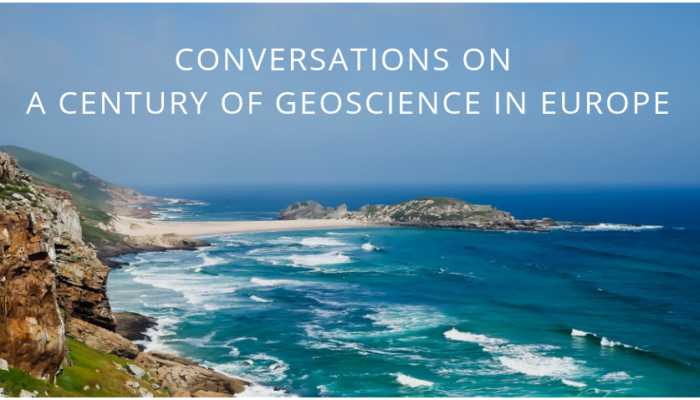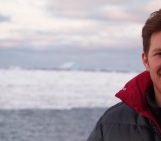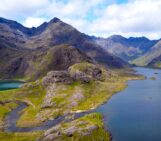
Over the last century, geoscientists have made incredible contributions to our understanding of the Earth, the solar system, and beyond. Inspired by the American Geophysical Union (AGU) and the International Union of Geodesy and Geophysics (IUGG) centennials, which are celebrated in 2019, we would like to highlight Europe’s role in shaping the geosciences and the great achievements of European geoscientists within the last century.
In this series of interviews, scientists reflect on the last 100 years of Earth, space and planetary sciences in Europe and share their perspectives on the future.
 Anne-Marie Treguier: Research Director at the French National Centre for Scientific Research and the European Institute for Marine Studies in the Ocean Physics Laboratory
Anne-Marie Treguier: Research Director at the French National Centre for Scientific Research and the European Institute for Marine Studies in the Ocean Physics Laboratory
In your opinion, what are some of the biggest ways Europe and European scientists have shaped the geosciences within the last century?
From the point of view of my discipline, I would say Vilhelm Bjerknes and the ‘Bergen School of Meteorology’. This school has been the starting point for understanding atmospheric dynamics, for example understanding why our European weather varies from day to day as storms travel from west to east. These storms are large-scale perturbations governed, to some extent, by Rossby waves, which have been named after one of Bjerknes’ students. The Bergen School initiated and developed a coherent and powerful dynamical framework of geophysical fluid dynamics, that has been key to enable to development of modern oceanography, pioneered later by famous US scientists such as Henry Stommel. The ‘Bjerknes compensation’, a hypothesis that poleward heat transports in the ocean and atmosphere should have a tendency to vary in opposite directions and thus compensate each other, is presently a very active field of research in the context of climate change.
Which European researcher from the last century has influenced your work the most?
Without doubt, the French oceanographer Christian le Provost. Christian has been exemplary by the variety of scientific questions he has pursued during his career. He started with the investigation of tides, building a physical model of the English channel on the Coriolis turntable, then developing a high-precision global model, and contributing to the global sea level observing system. In the 1980s, he was among the first in France to use quasi-geostrophic numerical models of the ocean.
At the time I was a PhD student in Brest with Alain Colin de Verdière and Lien Hua. Christian and I shared the same questions about the mysteries of mesoscale turbulence, these 100 km-scale meanders and eddies that are the ‘weather’ of the ocean. Examples are the north-south excursions (meandering) of the Gulf Stream, the Agulhas rings (quasi-circular eddies) in the South Atlantic, or the subsurface lenses of Mediterranean water (‘meddies’) penetrating into the Atlantic ocean. We participated in the international effort to investigate the mechanisms of generation of these eddies, their vertical structure and their interaction with the ocean bathymetry.
However quasi-geostrophic models were idealized and could not give answers to climate-relevant questions. What was the role of thin and intense boundary currents such as the Gulf Stream, and the role of mesoscale eddies, in transporting heat and salt from the tropics to the polar regions? Christian le Provost convinced me to get involved into the development of more realistic high-resolution numerical models of the global ocean. The group of colleagues initially gathered around Christian has been at the core of the European DRAKKAR consortium, an association of research teams from France, the UK and Germany developing fully global numerical models with a grid scale of a few kilometers, thus capable of representing ocean eddies.
Christian also played a major role in the development of operational oceanographic forecasts in France. As the first scientific director of Mercator-Ocean in the late 1990s, he led the early steps of the European Copernicus Marine Services.
For the next generation of researchers, what skills/technology/concepts do you think will be the most important for advancing the next century of geoscience?
The concepts of geophysical fluid dynamics will remain of fundamental importance, although their use will be different from what it used to be in the past.
In the previous centuries, theoretical frameworks for energy flow in the ocean and atmosphere systems, waves, instabilities and mixing were used directly to compute ocean circulations or weather forecasts. Now, short term forecasts as well as climate scenarios are computed using high resolution numerical models that aim at an explicit representation of the relevant processes.
In the future, these numerical tools will be augmented, or for some applications, replaced by artificial intelligence algorithms trained on observations and reanalysis data. In all cases, our confidence in these complex tools will ultimately rely on their consistency with the laws of physics and conservation principles. To build confidence and to quantify uncertainties, the development of numerical models and IA tools requires extensive testing based on a theoretical understanding of individual ocean-atmosphere processes as well as their interactions.
Interdisciplinary skills will be required to make the best use of new knowledge in mathematics and signal processing as well as geosciences. Furthermore, the link with end-users of these forecasts and scenarios needs to be strengthened. This will be facilitated by more interdisciplinary work with social scientists who study the economical and sociological aspects of the applications of these tools for climate change, ocean resources or coastal societies.
What do you think will be the biggest challenges for the geosciences in the next century?
Our planet has entered a new era, the Anthropocene, characterized by human-caused global climate change. It is a challenge for oceanography because we have to abandon our image of a relatively stable ocean circulation on centennial time scales. The accelerating pace of warming challenges our capacity to observe the ongoing changes, for example the ocean heat intake, acidification, deoxygenation and the shifting regional salinity patterns. We can no longer build a theory of the future state of the ocean, atmosphere or cryosphere without any hypothesis about the future choices of humans regarding their impact on the global environment.
The responsibility of geoscientists is huge. We must gather as many observations as possible in this changing environment. We must frame our scientific questions in the context of a wide range of future scenarios, to understand and predict as much as possible the evolutions of the complex natural systems that both regulate the climate and depend on it.
Last but not least, we have an historic responsibility in educating the public on these issues. I participate in this effort as an author of the IPCC sixth assessment report, but the IPCC is not enough. All geoscientists should contribute to teach inhabitants of Earth what their role is in the ongoing planetary changes. This is of the utmost importance because the earlier we decarbonize our economy, the earlier we will see the global temperature stabilize, and the less irreversible damage will occur in climate systems, ecosystems and in the societies that depend on them.
Interview by Olivia Trani, EGU Communications Officer
You can find more of our interviews on a century of geoscience in Europe here.



